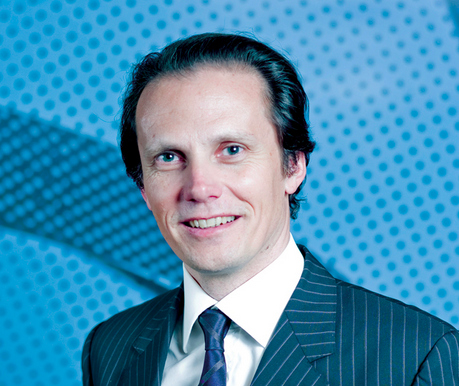Venezuela, Amongst the Main Options in EdRAM’s Emerging Debt Strategy
| By Fórmate a Fondo | 0 Comentarios

Jean-Jacques Durand, Senior Manager of the Emerging Fixed Income strategy at Edmond de Rothschild Asset Management (EdRAM), is firmly committed to Venezuelan fixed income assets as he considers that the default risk is below 50% and that it has great upside. A few months ago, Venezuela, which currently represents the largest position in their portfolio, had unfavorable technical factors which, during the summer, prompted partial profit taking for an asset in which the portfolio manager had already invested previously, and to which he returned in early 2014. After the fall of oil prices during the month of December, Durand has decided to strengthen his commitment to this country once again.
“Oil risk is high but Venezuela’s upside potential is huge,” says Durand, who explains that, “six months ago I would have thought that the worst scenario for Venezuela’s sovereign debt would be a sharp drop in oil prices, if this was produced by a fall in demand. The highest risk was a brutal fall of the development of Chinese economy, but the decline in prices has been due to supply and the OPEC’s decision not to intervene.”
The manager is confident that Venezuela will not need a restructuring of its debt or reach a default situation, which 85% of the market expects. While considering that the country has been very poorly managed, he thinks it has a good chance of readjustment, which would enable it to continue repaying its debt. “The default risk is below 50%. Even though currently the situation is difficult because social spending is very high, there are elections later this year, and the price of oil is very low, if a default were to occur it would be a political decision. The country has already overcome similar situations experienced in previous crises. It has never defaulted. “With a ratio of external debt to GDP below 20%, and most of its debt held by local investors, Venezuela has a relatively strong position to negotiate with its creditors.
Durand, who has spent the last four years in EdRAM after a long career as an emerging market’s fixed income trader in investment banks in New York and London, confesses that flexibility is required in order to choose the adequate risk and to invest the portfolio in the appropriate assets. “During those periods when the conviction is not as attractive, you have to be able to lower the portfolio’s overall exposure,” he says. When he took over management of the fund in 2012, he had to decide whether he wished to adopt either a more cautious, or a more risky approach as his overall investment philosophy. In his strategy’s investment decisions, the macro situation weighs as much as technical factors (flows, valuation, momentum), which may lead to take positions in assets that are unattractive if we just look at macro data such as the ratio of debt to GDP of the issuing country, but have very favorable fund flows or very attractive valuations. Thus, this strategy’s portfolio has a very distinct composition compared to its peers.
Such is the case of Russia, a market with very negative macro fundamentals. The political crisis and international sanctions imposed on the country have impacted the economy and the Russian Debt market, causing the consensus recommendation to drop from overweight to outright underweight. The price of bonds reflects a situation that is four or five levels below its credit rating, due to lack of investor confidence. According to Durand, “despite the crisis, its level of public debt to GDP is below 15%, external debt is virtually nonexistent, only 3% of GDP, and its ability to repay is very strong”. Currently, despite its fundamentals, which in the past prompted the manager to stay out of this country, the strategy holds a strong position in Russia.
Egypt, where Durand began building a position during the crisis “because when everyone sells there are opportunities”, is yet another example to illustrate that many times the portfolio composition is different from most of the other strategies within its category. In Mexico’s case, however, the momentum and valuation have caused the strategy to exclude it since 2012, when he disposed of an important position with significant gains, even though it shows a positive macro fundamental analysis.
Market flows greatly condition performance. Argentina, with a significant technical specific risk in 2013, was at that particular time the biggest position within the strategy. “There was a consensus recommendation to clearly underweight Argentinian sovereign debt, and us a result that the marginal seller had already exited. The only possibility remaining was for it to climb, and it did. The debt stock changed hands, leaving that of investors who cannot tolerate risk to local or medium long term investors,” added Durand.
Their positions in Belize are another sign of the management style of this strategy, in which the size of the country or its weight in the index are irrelevant. In 2012-13, elections were held in the country, debt was restructured, bonds fell dramatically, and there was very little liquidity, but there was value. “The macro analysis showed that debt was below 90% of GDP, the last government had not performed badly. It was a question of predicting, before the elections, what was the likelihood that the candidate who wanted to restructure debt would win the elections, and upon election, how would it handle restructuring (fast or slow, friendly or not). Seeing the price at which it was trading, profits were assured, regardless of who won power. In order to build the position, we began taking positions in 2012, further increasing them in 2013.”
This strategy, which may invest either in sovereign and quasi sovereign debt, as well as in corporate bonds, also takes advantage of opportunities in hard currency and in local currency debt. The strategy currently does nor hold local currency bonds because Durand expected some adjustment after the commodity boom. “We have something on the radar, but we have not entered as yet. We currently offer a strategy which is more focused on hard currency debt than in local currency debt”, he concludes.








